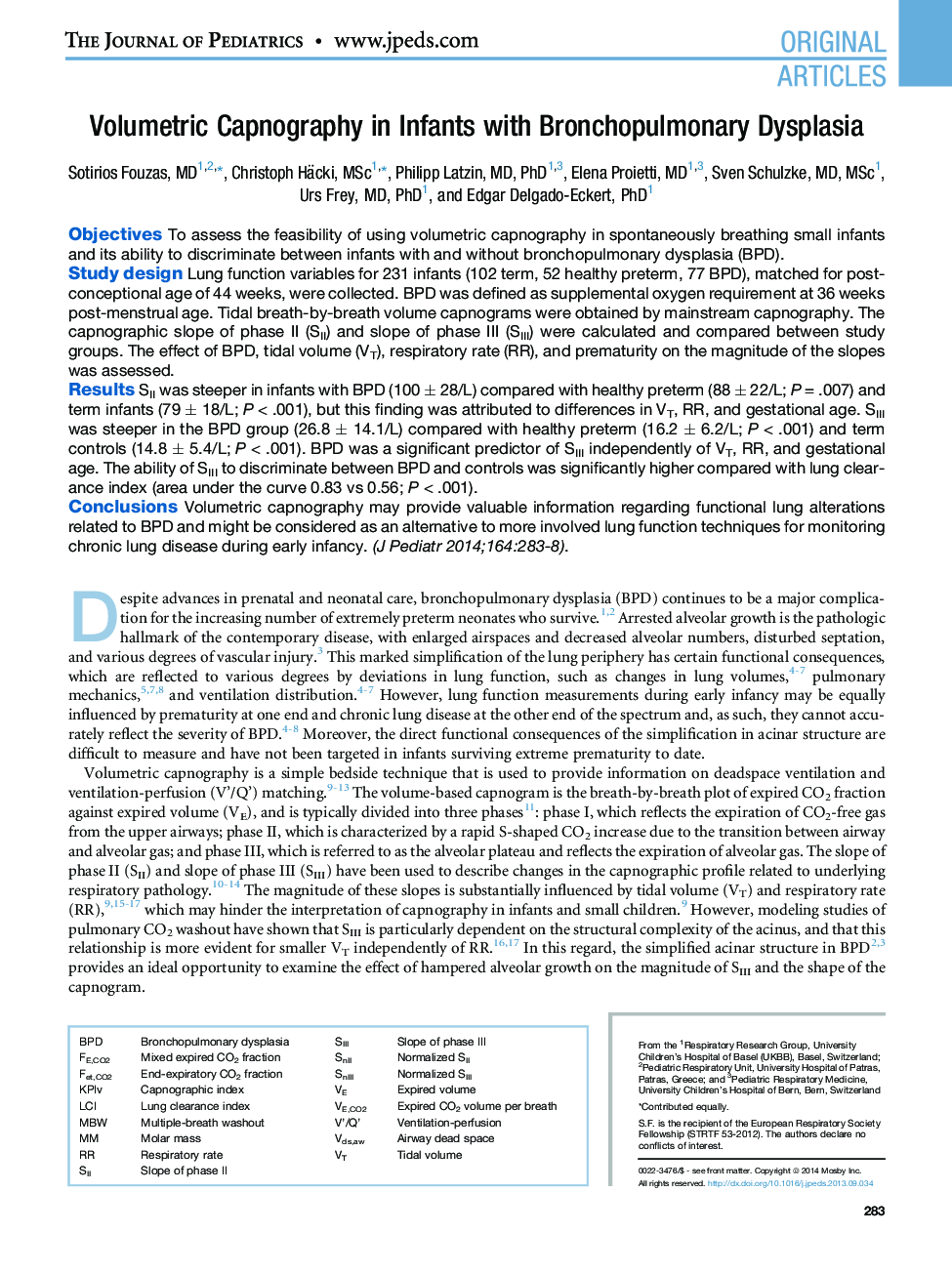| Article ID | Journal | Published Year | Pages | File Type |
|---|---|---|---|---|
| 6221881 | The Journal of Pediatrics | 2014 | 9 Pages |
ObjectivesTo assess the feasibility of using volumetric capnography in spontaneously breathing small infants and its ability to discriminate between infants with and without bronchopulmonary dysplasia (BPD).Study designLung function variables for 231 infants (102 term, 52 healthy preterm, 77 BPD), matched for post-conceptional age of 44 weeks, were collected. BPD was defined as supplemental oxygen requirement at 36 weeks post-menstrual age. Tidal breath-by-breath volume capnograms were obtained by mainstream capnography. The capnographic slope of phase II (SII) and slope of phase III (SIII) were calculated and compared between study groups. The effect of BPD, tidal volume (VT), respiratory rate (RR), and prematurity on the magnitude of the slopes was assessed.ResultsSII was steeper in infants with BPD (100 ± 28/L) compared with healthy preterm (88 ± 22/L; P = .007) and term infants (79 ± 18/L; P < .001), but this finding was attributed to differences in VT, RR, and gestational age. SIII was steeper in the BPD group (26.8 ± 14.1/L) compared with healthy preterm (16.2 ± 6.2/L; P < .001) and term controls (14.8 ± 5.4/L; P < .001). BPD was a significant predictor of SIII independently of VT, RR, and gestational age. The ability of SIII to discriminate between BPD and controls was significantly higher compared with lung clearance index (area under the curve 0.83 vs 0.56; P < .001).ConclusionsVolumetric capnography may provide valuable information regarding functional lung alterations related to BPD and might be considered as an alternative to more involved lung function techniques for monitoring chronic lung disease during early infancy.
